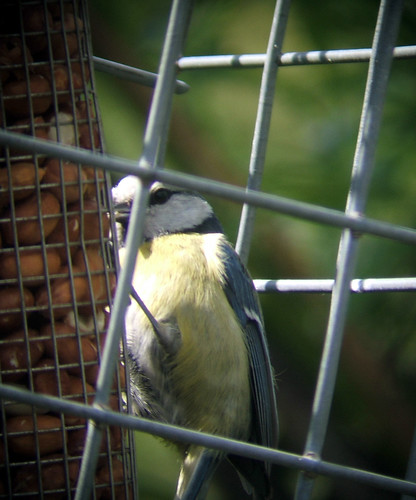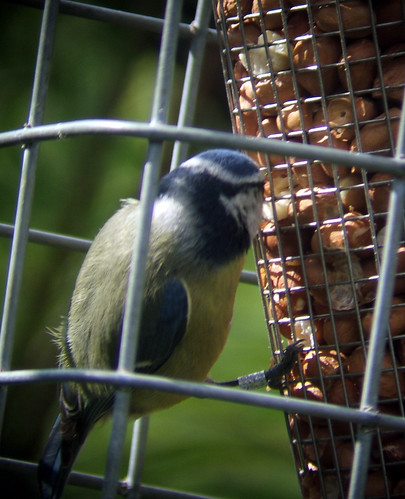This little chap is a blue tit and (s)he's on the peanut feeder at the London Wetlands Centre. The cage around the feeder is particularly useful at this venue as it stops bullying non-native rose ringed parakeets from dominating all the feeders. As you can see from my earlier post - they still get access to some feeders though.
As you can see the bird in question is doing its bit for science, with a ring on its leg. Ringing (or banding) schemes fascinate me for the idea of the data that can be recovered. A heron at LWC has a ring that reveals he moved a total of less than a mile in 3 and a half years but sometimes ringed birds are recovered in different continents.
Edit: I thought I should soup this earlier post up a little bit to add a bit for IATB readers so here's some awe-inspriring record ringing results courtesy of this wikipedia page:
"An Arctic Tern ringed as a chick not yet able to fly, on the Farne Islands off the Northumberland coast in eastern Britain in summer 1982, reached Melbourne, Australia in October 1982, a sea journey of over 22,000 km (14,000 miles) in just three months from fledging.
A Manx Shearwater ringed as an adult (at least 5 years old), breeding on Copeland Island, Northern Ireland, is currently (2003/2004) the oldest known wild bird in the world: ringed in July 1953, it was retrapped in July 2003, at least 55 years old. Other ringing recoveries have shown that Manx Shearwaters migrate over 10,000 km to waters off southern Brazil and Argentina in winter, so this bird has covered a minimum of 1,000,000 km on migration alone (not counting day-to-day fishing trips). Another bird nearly as old, breeding on Bardsey Island off Wales was calculated by ornithologist Chris Mead to have flown over 8 million km (5 million miles) during its life (and this bird is still alive in 2003, having outlived Chris Mead)."


No comments:
Post a Comment